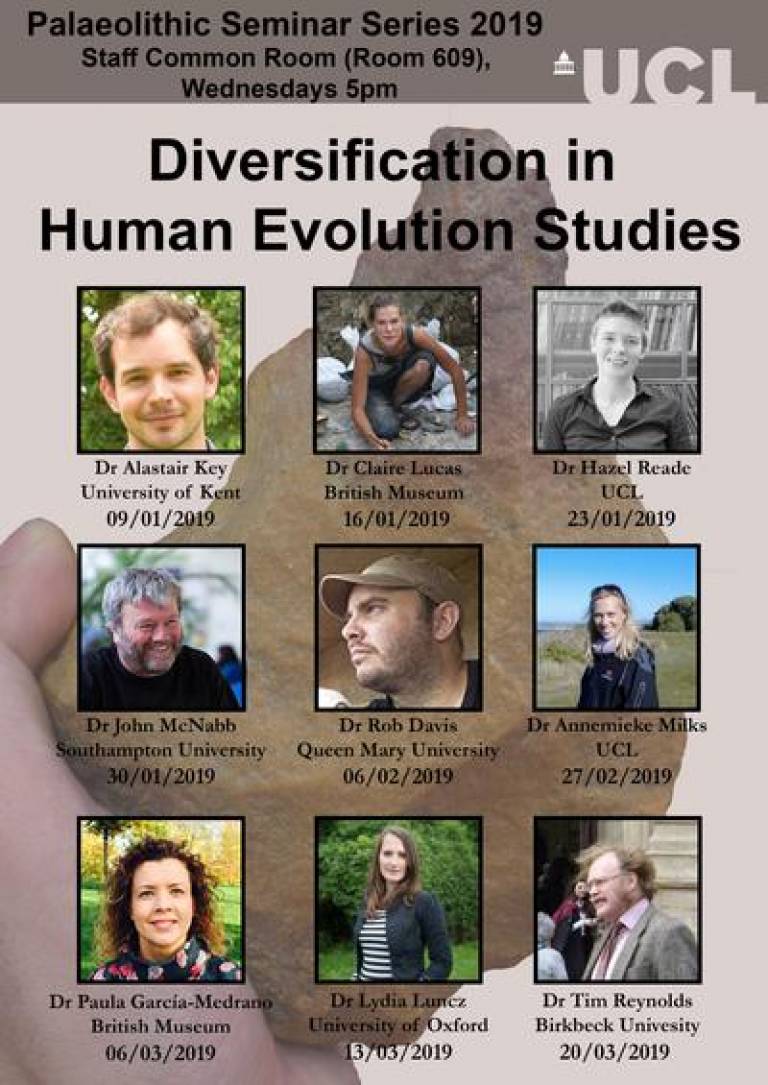The mystery of Palaeolithic perforated batons
16 January 2019, 5:00 pm–6:00 pm

Event Information
Open to
- All
Location
-
Room 609, UCL Institute of Archaeology
Claire Lucas (The British Museum) will give the next seminar in the new series on Diversification in Human Evolution Studies at the UCL Institute of Archaeology on 16 January.
Abstract
Perforated batons are artefacts, usually made from a segment of antler, that are formed from an elongated sub-cylindrical shaft with a wider distal end of variable shape, and possess at least one circular or ovate perforation. Despite the large number of examples found in Upper Palaeolithic and Early Mesolithic layers (> 400), their use still remains enigmatic. No fewer than 40 functional hypotheses have been proposed, following debates that have persisted for over 150 years; the perforated baton has consequently become emblematic of our misunderstanding of some ancient objects' functions.
This lecture will give an overview of research conducted on perforated batons, discussing their making, their rich decorations and their possible uses. Then, we will present the results of the technological analysis of the perforated batons from Gough's Cave (Somerset, UK) undertaken at the Natural History Museum of London. The three Magdalenian examples from Gough's Cave display a number of functional features and can add significant insight to the debate about the use of enigmatic objects.
Any enquiries about the event may be directed to Tomos Proffitt.
 Close
Close

